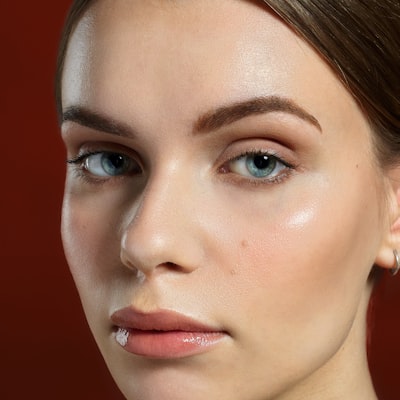What is Reflexology?


Reflexology therapy utilizes pressure from the foot and hand points to relieve the stress. It's non-invasive and offers numerous benefits. Additionally, it can be utilized in conjunction with different medical treatments. This method is getting more common in America in the United States, and is used by cancer and wellness programs as well as treatment centres.
Relaxation and stress relief are possible through foot and hand reflexology
Reflexology of the foot and hand is a great way to relax and relieve stress. It also helps with conditions such as neuropathy and exhausted feet. Reflexology may also be utilized for relieving the soreness or discomfort that one experiences when walking or exercising for extended periods of duration. There are numerous advantages of hand and foot reflexology, for example, reducing anxiety and enhancing circulation.
You can even sleep better when you use reflexology. It addresses the primary cause of sleep disruption by addressing painful. The constant pain can make it difficult to rest which can impact the quality of your rest. Check out the post right here The practice can also help relieve stress and reduce the anxiety that is caused by sleep disturbance. Reflexology can benefit everyone. It is not recommended for people with gout or heart problems. In addition, reflexology isn't suitable for women during pregnancy.
It is able to treat a range of medical ailments
A medical alternative which is called reflexology, it can be employed. It can help combat a variety of ailments, including chronic tension, fatigue and back tension. Additionally, it is beneficial to patients with claustrophobia, as well as digestive conditions. There's evidence to suggest that reflexology could reduce the effects of migraines as well as sleepiness.
For pain relief To ease pain, pressure is applied the points of the hands and feet. The points correspond with different areas of the body, which is thought to boost blood circulation and improve the flow of energy. They are believed to reduce tension and ease pain in all other regions of the body. The practitioner can employ soothing music and aromatherapy to help boost their healing experience.
It's non-invasive
Reflexology is a form of complementary therapy that is the practice of applying pressure on certain points in the body. The treatment works with energy lines to restore balance and energy flow. The methods used by reflexology aren't invasive, and will not create any discomfort. But it's crucial to choose a licensed reflexologist who can provide the treatment.
Numerous ailments may get relief from reflexology. For example, it can aid in the treatment of hormonal or digestive problems. This treatment can be helpful in those who've just been through surgery or suffered an injury. This treatment is non-invasive and can be used in conjunction with conventional medical treatments.
This is complementary to other medical treatments
Reflexology is a form of complementary medicine that helps the body heal itself naturally. The roots of reflexology go from the time of the Egyptians. Eunice Ingham, a native of the USA developed this method. According to Ingham stimulating certain areas of the feet can aid in restoring balance and harmony to the body. Ingham also believes stimulation of specific feet regions can aid in healing by clearing blocked energy pathways. She is considered the 'Mother of Modern Reflexology'. In the UK, reflexology was introduced in the early 1960s by Doreen Bayley. Since the time, several schools have come up in the country which includes the British Reflexology Association, which was founded in 1985.
Reflexology that is combined with complementary and alternative therapies is a popular method of practice. This includes aromatherapy, color therapy, homeopathy massage and yoga. While there are a few well-known reactions to reflexology, it's important to be sure your professional is certified in this kind of therapy.
It's not meant to be an insult.
Massage, also known as reflexology works with specific points within the body. Similar to massage as the therapist applies pressure using the fingers and thumbs, however in this instance, the pressure is targeted to specific areas. It is designed to create a calming effect to the body as well as the mind.
Over the course of thousands of years reflexology is a technique that has been around for generations. It originated in China as well as Europe and then it was in the United States it became popular in the early 1900s. The idea was first explored by Sir Henry Head (an English physician) in the early 1890s. Similar theories were also being studied by therapists in Germany and Russia around the same time. It was not until two decades later when William H. Fitzgerald developed the concept of zone analgesia that relied on applying pressure to specific points on the feet and hands. There are many options and strategies to address various issues, such as reflexology.
This method does not cure or diagnose any condition.
Reflexology is an approach to treatment that uses pressure on certain locations on the body in order to restore balance and health. The treatment takes place in a spa-like setting. Reflexologists employ their feet, hands and ears in order to activate channels of energy within our bodies. Reflexology doesn't diagnose or cure any diseases It is an effective and reliable alternative medicine that can help to feel more comfortable through many different methods.
Reflexology can be performed by applying pressure controlled to specific points on the body, using fingers and thumbs to stimulate specific regions. The practitioner first looks at the feet or hands of the patient and then massage the sensitive areas either on the feet or hands. The amount of sensitivity , or the tenderness of these points varies from person to person. It is vital to restore balance , and reduce symptoms from a variety of conditions.
For those with serious physical or mental health problems, it's totally secure
While reflexology can be performed safely by most people, there are some patients who do not feel similar. For those with open sores fractures that are acute, or fractures must avoid using the practice of reflexology. Also, people with blood clots that are active should be extra cautious while receiving reflexology. Before having reflexology talk to your physician if you are in this group. Individuals with frequent skin problems or recent surgical procedures should be avoiding reflexology as well. Pregnant women may also find reflexology dangerous.
Research on reflexology is limited. Studies with a lack of adequate numbers of participants are rare. They typically have 20-40 participants. Blinding them can also result in bias. Also, the majority studies lack sufficient group of control subjects to evaluate whether reflexology is reliable.
